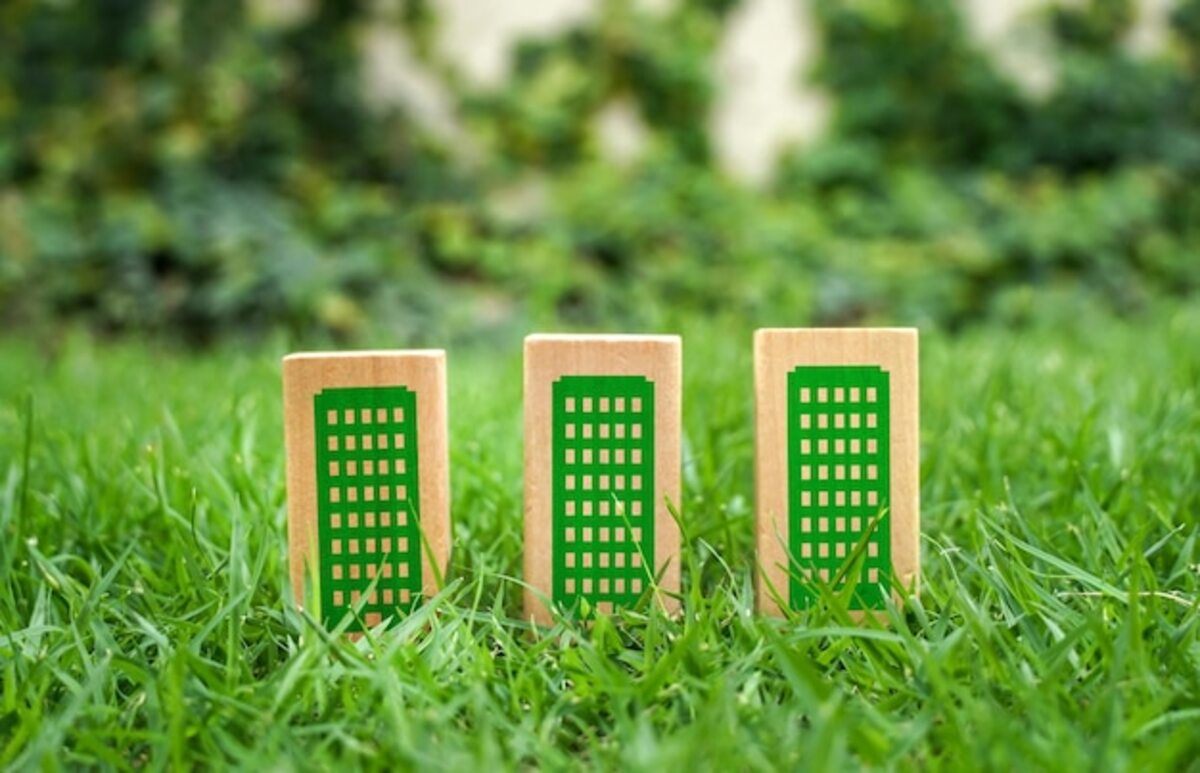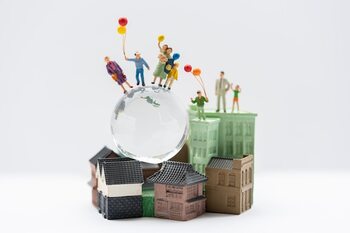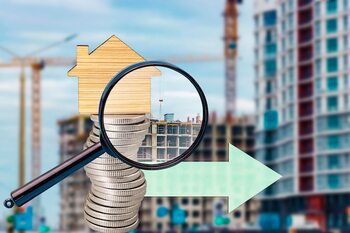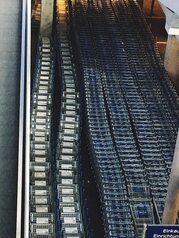Impact of Sustainable Development on Real Estate Appreciation

Sustainable development is not just a trend, but a fundamental pillar that redefines the value of real estate. In this article, we will explore how the implementation of sustainable practices in communities directly impacts real estate appreciation, transforming specific areas into true investment magnets. If you are interested in buying or selling properties, understanding this phenomenon can be key to maximizing your return on investment and making informed decisions about the best areas in the country.
1. What is sustainable development and why is it relevant to the real estate sector?
Sustainable development refers to an approach that seeks to meet the needs of the present without compromising the ability of future generations to meet their own needs. In the context of the real estate sector, this involves creating and managing spaces that are not only economically viable but also socially responsible and environmentally sustainable. The integration of practices such as energy efficiency, the use of recycled materials, and the promotion of green spaces not only improves the quality of life for residents but also elevates the appeal and value of properties in the market. The relevance of sustainable development in the real estate sector lies in its ability to influence the perception of a property's value. Buyers and investors are increasingly interested in properties that meet ecological standards and contribute to resilient communities. This translates into a growing demand for sustainable real estate, which can result in a significant increase in property value. Thus, adopting a sustainable approach is not only beneficial for the environment and society but also represents a strategic opportunity to maximize investments in real estate.
The relationship between sustainable development and quality of life: a key factor for added value.
The relationship between sustainable development and quality of life is undeniable and becomes a key factor for real estate appreciation. Communities that adopt sustainable practices, such as efficient resource use, promoting public transportation, and creating green spaces, not only improve their environment but also enhance the well-being of their residents. A healthy and accessible environment attracts families and professionals seeking quality of life, which in turn increases the demand for properties in those areas. This increase in demand directly impacts real estate market prices, thereby raising appreciation.
Additionally, sustainable development initiatives foster a sense of community and belonging among residents. The implementation of projects that prioritize environmental care and social well-being creates an additional appeal for potential buyers and investors. Areas with a strong ecological identity are not only seen as desirable places to live but also as safe long-term investments. Therefore, by integrating sustainable practices into their urban planning, cities can transform their economic and social profile, enriching both current residents and future investors interested in capitalizing on this trend towards a more conscious and responsible lifestyle.
3. Green areas and their impact on property values: more than an aesthetic whim.
Green spaces have proven to be a determining factor in property valuation, and their impact goes beyond aesthetics. The presence of parks, gardens, and recreational areas not only improves air quality and the well-being of residents but also creates a more attractive environment for potential buyers and renters. Studies have revealed that properties located near green spaces tend to have higher prices in the real estate market, as buyers value these areas as a natural extension of their homes. This phenomenon transforms urban areas, promoting a healthier and more sustainable lifestyle.
In addition, green areas contribute to sustainable development by promoting biodiversity and reducing the urban heat island effect. These natural areas serve as habitats for various species and help regulate the ambient temperature. Therefore, developers who integrate green spaces into their projects not only comply with environmental regulations but also significantly increase the appeal of their properties. In this sense, investing in homes near green areas becomes a smart strategy for those looking to maximize their long-term investment, as these features are highly valued by current and future generations who prioritize a sustainable lifestyle.
4. Renewable energies: how they influence real estate valuation.
Renewable energies are gaining prominence in the development of sustainable communities, and their influence on real estate valuation is undeniable. Properties that incorporate clean technologies, such as solar panels or geothermal systems, not only reduce energy costs for their owners but also become more attractive in an increasingly environmentally conscious market. Today's buyers value ecological aspects and are willing to pay higher prices for homes that offer sustainable energy solutions. This trend not only increases the appreciation of individual properties but also contributes to the creation of neighborhoods with a favorable reputation among investors.
Additionally, government policies and local initiatives that promote the use of renewable energy often serve as an added incentive for potential buyers. In many regions, tax incentives and subsidies are implemented for those who choose to integrate these technologies into their homes. This not only promotes a more sustainable lifestyle but also creates a positive effect on the real estate market by increasing demand for properties with eco-friendly features. Thus, the focus on renewable energy becomes a key strategy for real estate developers and investors looking to maximize their return on investment while contributing to the well-being of the environment and the community.
5. Ecological infrastructure: the role of sustainable public spaces in real estate appreciation.
Ecological infrastructure plays a fundamental role in the valuation of real estate properties, as sustainable public spaces not only improve the quality of life for residents but also increase the attractiveness of an area. Parks, community gardens, and recreational areas designed with environmental criteria promote a healthy and accessible environment for everyone, which in turn attracts more people and investors. This type of infrastructure becomes a differentiating factor in the real estate market, creating a positive perception of the locality and raising its value.
Furthermore, the implementation of sustainable public spaces fosters social cohesion and a sense of community, essential factors that can influence purchasing or rental decisions. A neighborhood with well-maintained green areas designed to be environmentally friendly not only provides a pleasant space for outdoor enjoyment but also reflects a commitment to sustainable development, which is increasingly valued by buyers. In this sense, investments in ecological infrastructure are seen as long-term improvements that ensure not only a significant economic return but also a better quality of life for its inhabitants.
6. Resilient communities: successful examples that raise their prices thanks to the sustainable approach.
Resilient communities have proven to be outstanding examples of how a sustainable approach can elevate property values. These areas, which prioritize sustainability in their urban designs and resource management, attract a growing number of environmentally conscious residents and businesses. Projects such as the creation of green spaces, efficient public transport systems, and the implementation of renewable energies not only enhance quality of life but also increase property value. A clear example is the development of eco-neighborhoods that integrate green technology and community spaces, becoming focal points for buyers who value a more sustainable lifestyle.
Additionally, these developments not only focus on the environment but also foster a strong community culture. The active participation of residents in local initiatives strengthens the sense of belonging and promotes investments in community infrastructure, which in turn further elevates real estate prices. Communities like these are valued for their ability to adapt to economic or climatic crises, thus creating a safe and attractive environment for both investors and homeowners. In summary, resilient communities are not only a refuge for those seeking to live with greater ecological awareness; they also represent significant opportunities for those interested in maximizing their real estate investment through sustainable practices.
7. Global trends in sustainable development that are affecting Costa Rica and its real estate market.
The rise of sustainable development has gained significant relevance worldwide, and Costa Rica is no exception. The country has positioned itself as a leader in sustainability, promoting practices that range from the conservation of natural resources to the use of renewable energies. These initiatives not only benefit the environment but also create an attractive environment for investors and property buyers, who are increasingly looking for homes that meet environmental standards. The demand for eco-friendly properties translates into an increase in the added value of properties located in areas that prioritize sustainable development, generating a virtuous circle between green infrastructure and real estate value.
Furthermore, global trends such as sustainable urbanization and the creation of resilient communities are directly influencing the Costa Rican real estate market. Developers are adopting innovative solutions, such as LEED-certified buildings and neighborhoods designed to minimize environmental impact. This not only improves the quality of life for residents but also attracts buyers interested in more eco-friendly lifestyles. As more people become aware of the importance of sustainable development, properties in these areas tend to experience steady appreciation, establishing themselves as viable options for those looking to maximize their investment while supporting a more sustainable future for Costa Rica.
8. How to assess the sustainable potential of an area before investing in real estate.
Evaluating the sustainable potential of an area before investing in real estate involves analyzing various factors that can influence long-term appreciation. First, it is essential to research local policies related to sustainable development and urban planning. This includes the existence of regulations that promote green building, energy efficiency, and responsible management of natural resources. Additionally, it is important to observe whether there are government incentives for sustainable projects, as this can attract investments and improve local infrastructure, which positively impacts property values.
Another crucial aspect is to consider the accessibility and connectivity of the area. Well-connected areas close to essential services such as public transport, schools, and health centers tend to be more attractive to both buyers and renters. The presence of green spaces and recreational areas also plays a vital role in assessing sustainable potential. These features not only enhance the quality of life for residents but also translate into higher real estate demand, which can lead to significant property value appreciation as interest in living in more sustainable and healthy environments grows.
9. Future projections: where is real estate appreciation heading with sustainable development?
The future projection of real estate appreciation in the context of sustainable development suggests a significant shift in how properties are valued. As concerns about the environment and social well-being become more prominent, buyers and developers are beginning to prioritize sustainable features, such as energy efficiency, the use of recycled materials, and the integration of green spaces. These features not only contribute to a better quality of life but can also translate into an increase in resale value. Areas that adopt these practices will be well-positioned to attract both residents and investors.
With the growing interest in living in eco-friendly and resilient communities, areas that incorporate concepts of sustainable development are likely to experience a surge in their property values. Favorable government policies and tax incentives for green projects will also play a crucial role in this evolution. Today's consumers are looking for not just a home, but a lifestyle aligned with their values; this implies that investing in properties situated in sustainable environments could be key to ensuring positive long-term returns. In summary, the intersection between real estate appreciation and sustainable development invites us to reconsider our expectations about the future of the real estate market.



